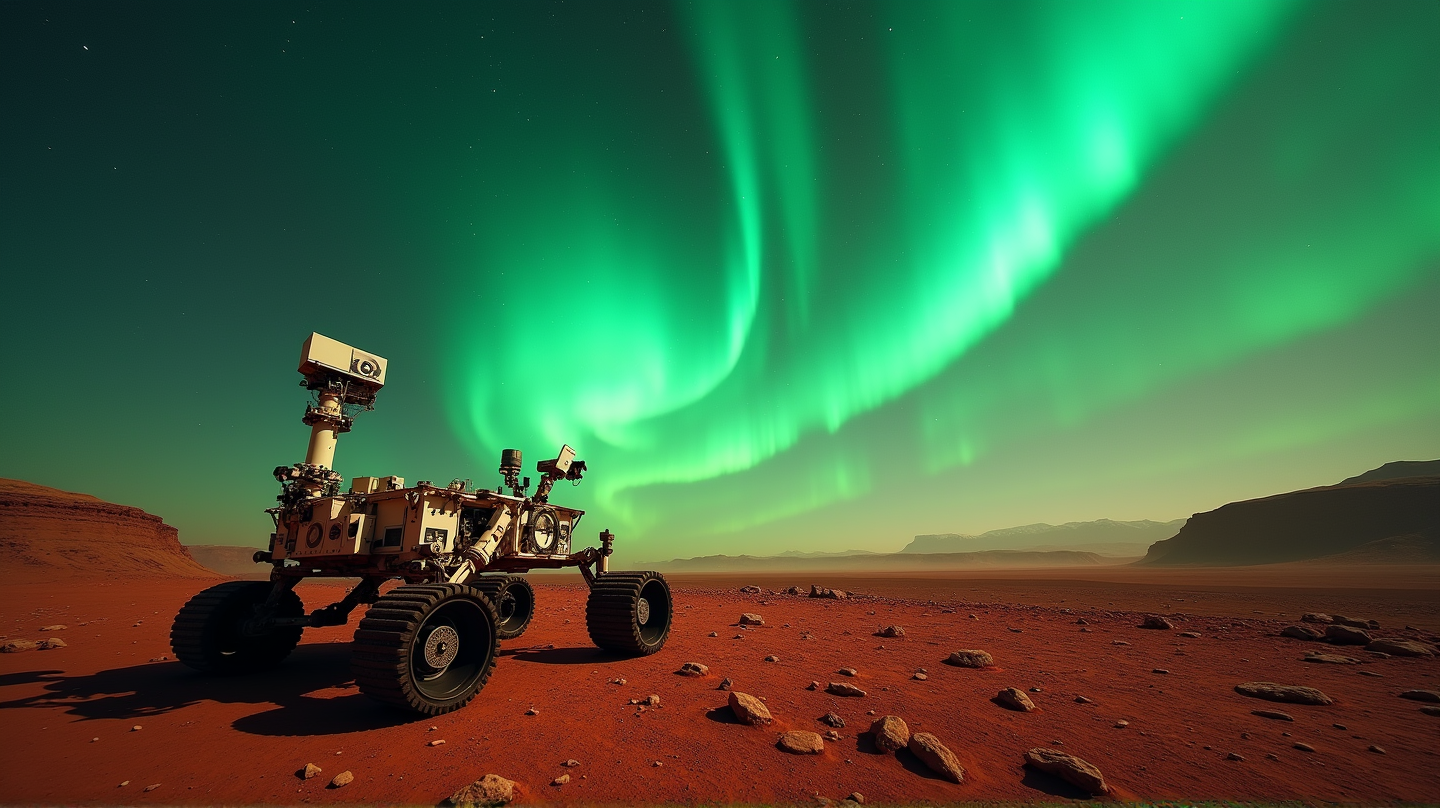Capturing the Elusive Martian Aurora: A Cosmic Breakthrough
For the first time, scientists have captured the elusive green auroras on Mars, alongside uncovering mysterious dust avalanches replacing once-assumed water flows.

A Dazzling Discovery: Mars Illuminated by Green Auroras
Mars, a planet long shrouded in mystery, continues to reveal its magnificent secrets. Recently, NASA’s Perseverance rover made a groundbreaking discovery by capturing images of green auroras in visible wavelengths from the surface of Mars. This celestial display, which we’ve primarily associated with our own planet, has finally been documented beyond Earth’s horizon. Although the Martian auroras appear as a gentle green glow to an observer’s eye, their significance is monumental. According to מכון דוידסון לחינוך מדעי, this discovery marks the first time such auroras have been captured from another planet’s surface.
Understanding the Subtle Martian Light Show
Mars’ atmospheric and magnetic conditions play a crucial role in the appearance of these auroras. Unlike Earth, Mars lacks a global magnetic field, leading to a more sparse and subdued auroral display. Instead of the vibrant light shows familiar to us, these particles are broadly dispersed, creating a softer glow. Additionally, Mars’ predominantly carbon dioxide atmosphere contributes to the subtlety of the light emitted. Researchers believe that more intense auroras might be observed in the more magnetically active southern reaches of the Martian landscape, offering tantalizing opportunities for future missions.
Debunking Myths: Dust in Place of Water on Mars
For decades, scientists puzzled over dark, changing streaks appearing across Martian slopes, initially hypothesizing seasonal water flows as the cause. However, a collaborative study using AI technology sheds new light—suggesting these phenomenon are the result of dust avalanches, not water flows. The AI model analyzed over 86,000 images, leading to a startling conclusion: these streaks are prevalent in areas characterized by robust winds and dust storms rather than the anticipated signs of liquid water.
Starship’s Awaited Return to the Skies
While discoveries unfold on Mars, challenges persist closer to home. SpaceX’s Starship is poised for its ninth test flight, but regulatory approvals remain pending. The anticipation builds with potential innovations, such as reusing the Super Heavy booster and testing high-stake in-space maneuvers. SpaceX continues to push the boundaries of space travel, striving to achieve a fully reusable launch system that could herald a new spacefaring era.
Setbacks in Orbital Ambitions: India’s Satellite Loss
Meanwhile, India faced unexpected setbacks in its space endeavors. A malfunction in the third stage of a PSLV-C61 rocket led to the unfortunate loss of the ESO-09 satellite, intended for strategic Earth observation. Despite the mishap, the reliability of India’s Polar Satellite Launch Vehicle remains a source of national pride, with investigations underway to prevent future failures.
In a week marked by trials and triumphs, the cosmos continues to challenge and inspire, telling tales of tenacity, discovery, and the relentless human spirit to reach beyond our earthly confines.

